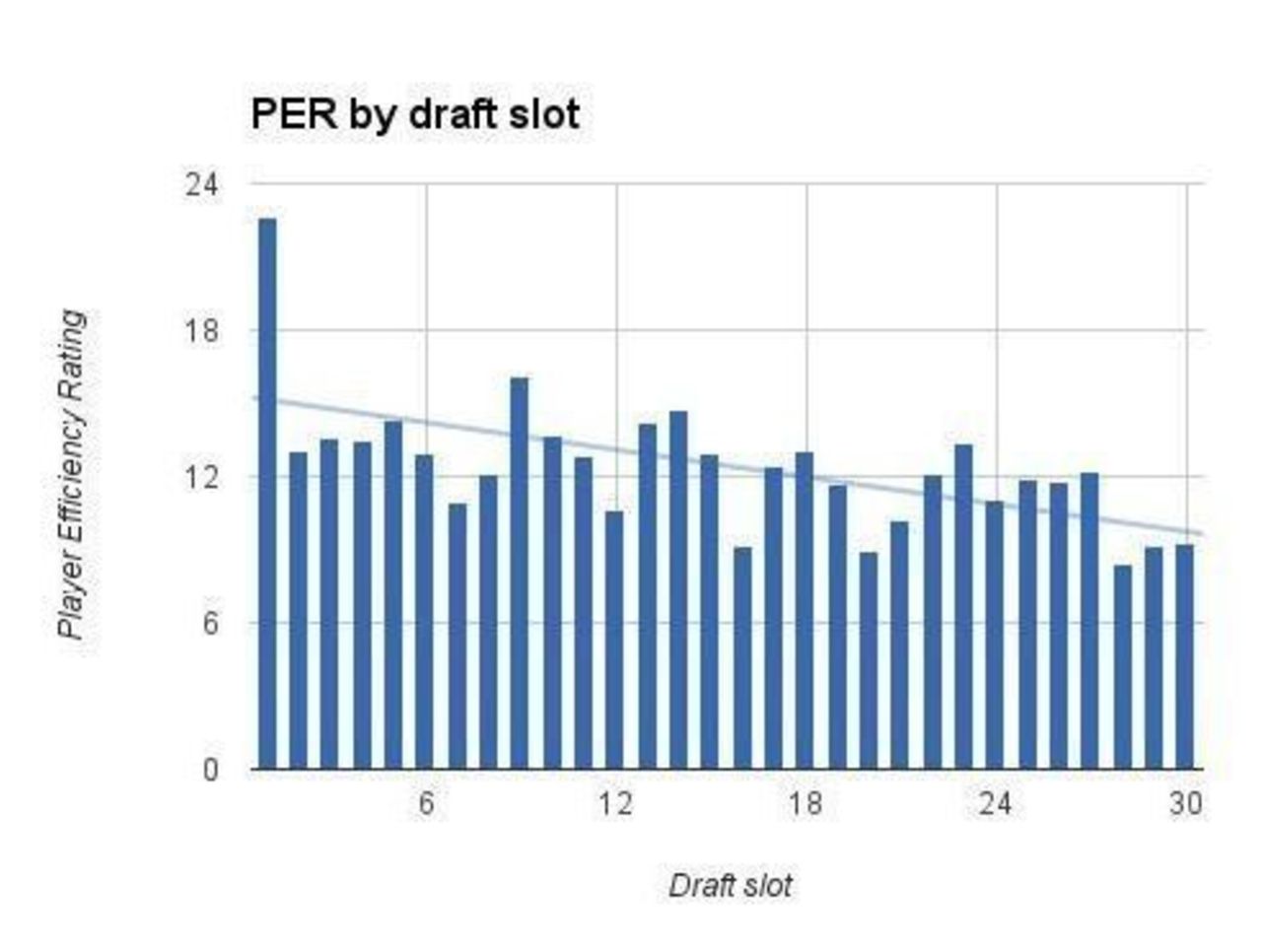Historic value from each NBA draft slot
We know the big names. LeBron James first overall in 2003. Kevin Durant second in 2007. Michael Jordan No. 3 in 1984. The loaded 1996 NBA Draft was so deep that one-third of the first-round picks became All-Stars.
It never gets old noting that the New York Knicks had three selections in that vaunted '96 first round, and the most effective NBA player they picked turned out to be Walter McCarty - for another team.
Rather than pile on franchises through the lens of hindsight, though, is there a trend that dictates value from each slot? After all, in '96, mid-first round gems like Kobe Bryant and Steve Nash were gone by the time the Knicks had their first shot at No. 18.
Obviously luck and competent scouting play a major role in drafting, but it's interesting to look back at historic value from each slot.
A few years ago, Roland Beech, the Dallas Mavericks vice president of basketball operations and founder of 82games.com, broke down production of every NBA draft pick by slot from 1989 to 2008. Beech assigned the slots along the lines of "star", "role player", "bust", etc., based on how players fared in the league. While he admittedly only used three cursory statistical categories - points, rebounds, and assists - to craft a point system, it still serves as a decent indicator of slot value.
Predictably, "stars" bunched in the top five picks over the 20-year period. The rest of the first round was evenly split among "solid", "role", and "deep bench" players. The second round, understandably, featured a plethora of "DNPs" - individuals who never played a single NBA minute.
There were outliers, though. The No. 57 pick showed star quotient, thanks to the San Antonio Spurs taking Manu Ginobili there in 1999. Meanwhile, the No. 12 pick (example: Robert Swift, 2004) showed a dip in star power, while No. 13 (Bryant) shot back up.
Of course, it's worth noting Bryant's selection was a product of its time, when drafting non-bigs out of high school was new and viewed as risky.
Picking up where Beech left off, below is the average Player Efficiency Rating of each first-round slot from 2009 to 2014. PER is far from a perfect science - in addition to sample sizes varying from one year of NBA service to six, some numbers skew with certain picks having never played in the NBA, and some - like Nikola Mirotic - being stashed in Europe for a few seasons.
| Pick | Average PER 2009-10 to 2014-15 |
|---|---|
| 1 | 22.6 |
| 2 | 13.1 |
| 3 | 13.6 |
| 4 | 13.5 |
| 5 | 14.3 |
| 6 | 13 |
| 7 | 11 |
| 8 | 12.1 |
| 9 | 16.1 |
| 10 | 13.7 |
| 11 | 12.8 |
| 12 | 10.6 |
| 13 | 14.2 |
| 14 | 14.7 |
| 15 | 13 |
| 16 | 9.2 |
| 17 | 12.4 |
| 18 | 13.1 |
| 19 | 11.7 |
| 20 | 8.9 |
| 21 | 10.2 |
| 22 | 12.1 |
| 23 | 13.4 |
| 24 | 11.1 |
| 25 | 11.9 |
| 26 | 11.8 |
| 27 | 12.2 |
| 28 | 8.4 |
| 29 | 9.2 |
| 30 | 9.3 |
The last six seasons at least partly support the trends discovered by Beech. The No. 12 selection remains one of the least-productive of the top 15 picks, although Dario Saric's absence from the NBA is a contributor to that low PER. Not surprisingly, the No. 1 slot leads the way, thanks to Blake Griffin, Anthony Davis, and Kyrie Irving.

Still, this is far from religious numerology. Stephen Curry has a career PER of 21.7, but the average of his No. 7 slot is brought down by Julius Randle's season-ending injury of 2014.
If anything, the numbers over the last 25 years demonstrate there's relatively consistent role player value to be had in the back half of the first round.